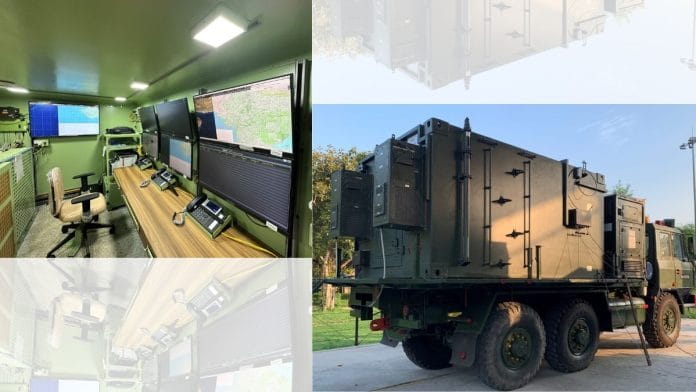New Delhi: India’s indigenous air defence command system Akashteer has emerged into the spotlight for its role in tracking and repelling aerial threats along the western front amid the flare-up with Pakistan last week.
In a post Wednesday on its official ‘X’ handle, Bharat Electronics Limited (BEL) said the system, designed and developed “in-house”, worked in coordination with ground-based defence units to prevent airborne threats from entering Indian airspace.
“Ground-based Defence Systems integrated with Akashteer made it hell for Pakistan’s air adventures,” BEL said.
Developed jointly by the Defence Research and Development Organisation (DRDO), Indian Space Research Organisation (ISRO), and BEL, Akashteer is a fully artificial intelligence-driven Air Defence Control and Reporting System.
According to reports, India has become the first non-Western country to integrate autonomous drone swarms, indigenous satellite surveillance and AI-driven battlefield management into a single, real-time air defence platform.
Akashteer empowers units on the front lines, enabling dynamic engagement decisions and preventing friendly-fire incidents. @DefProdnIndia @SpokespersonMoD
— Bharat Electronics Limited (BEL) (@BEL_CorpCom) May 14, 2025
A closer look at the system
Mounted on mobile vehicles, the Akashteer system is both flexible and, from threat identification to neutralisation, autonomous.
According to BEL, AI is the backbone of the system, enabling real-time processing of vast data inputs to support autonomous target detection, classification, and engagement decisions. This is supplemented by the integrated radar systems, sensors and encrypted communications.
Akashteer can direct drone missions that can independently select and coordinate targets mid-flight without operator inputs. Furthermore, the integration of 3D tactical radars, lightweight low-level radars, and the Akash Weapon System ensures rapid response while minimising the risk of friendly fire in contested airspace.
As part of India’s broader C4ISR (Command, Control, Communications, Computers, Intelligence, Surveillance, and Reconnaissance) framework, Akashteer is also linked to ISRO satellites and NAVIC (Navigation with Indian Constellation), India’s regional navigation satellite system, allowing for enhanced situational coverage and precision. The system offers a real-time unified air picture—the situation in the air, which is then accessible down to the lowest operational units of the Army Air Defence (AD).
Unlike conventional systems dependent on active radar signatures and human-triggered responses, Akashteer uses passive tracking to identify low-flying Unmanned Aerial Vehicles (UAVs) and loitering munitions, reducing its electromagnetic footprint and avoiding early detection.
The defence ministry had signed a Rs 1,982 crore contract in March 2023 for the production of 455 Akashteer units with BEL. By November 2024, 107 systems had been delivered, with full deployment expected by March 2027.
(Edited by Sanya Mathur)
Also Read: IAF bypassed & jammed Pakistan’s China-supplied air defence systems on 7 May, says India






